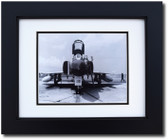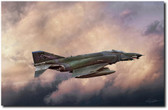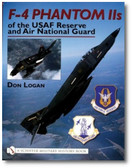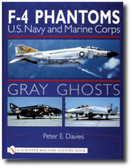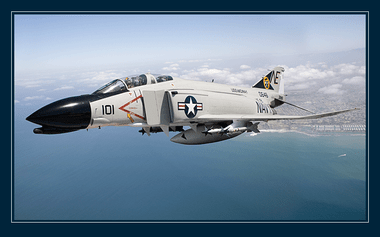 Loading... Please wait...
Loading... Please wait...- Home
- Aviation Art - By Artist
- F-4 Phantom (Navy)
- Home
- Aviation Art - By Artist
- Larry McManus
- F-4 Phantom (Navy)
- Home
- Aviation Art - Digital
- Larry McManus - Digital
- F-4 Phantom (Navy)
Categories
F-4 Phantom (Navy)
Product Description
Plane Type: F-4 Phantom
These four foot wide "High Definition" prints were created to be reproduced at this width. This is the reason for the excellent detail, sharpness and color saturation that you'll see in every print. These are the most detailed aviation prints at this size you can find!
*****
The McDonnell two-place, twinjet, all-weather F-4 Phantom II, with top speeds more than twice that of sound, was one of the most versatile fighters ever built. It served in the first line of more Western air forces than any other jet. Just 31 months after its first flight, the F-4 was the U.S. Navy's fastest, highest-flying and longest-range fighter. It first flew May 27, 1958, and entered service in 1961. It was named Phantom II on July 3, 1959, during a ceremony held at the McDonnell plant in St. Louis, Mo., to celebrate the company's 20th anniversary. It remained in production until the company's 40th anniversary. By then, the numeral "II" had been discontinued; it had become the only Phantom. The F-4 established 16 speed, altitude and time-to-climb records. In 1959, its prototype set the world altitude record at 98,556 feet. In 1961, an F-4 set the world speed record at 1,604 mph on a 15-mile circuit. By the end of production in 1985, McDonnell had built 5,068 Phantom IIs and Mitsubishi, in Japan, had built 127. Modifications incorporated improvements to weapons, avionics, radar and engines. The RF versions were equipped with cameras and surveillance gear for aerial reconnaissance. Armament ranged from cannons to missiles. F-4s saw combat in both the Vietnam War and Operation Desert Storm and served with the air forces of 11 countries in addition to the United States. Both U.S. military flight demonstration teams, the Navy Blue Angels and the Air Force Thunderbirds, flew the Phantom II from 1969 to 1973. The 5,000th Phantom was delivered on May 24, 1978, in ceremonies that also marked the 20th anniversary of the fighter's first flight, and McDonnell Douglas delivered the last St. Louis-built Phantom II in October 1979. By 1998, approximately 800 were still in service around the world. With the upgrades already performed and those under contract, the F-4 Phantom II will probably still be flying in 2015 -- nearly 60 years after its first flight.
How They're Printed -
His four foot wide (HD) mural prints are not printed using any inks.
To reproduce the fantastic detail and saturated color, these aviation images are printed using actual red, green and blue lasers that can produce 68 billion colors. The lasers project the image on actual photographic material and then is processed through chemical baths. This gives you a TRUE HIGH DEFFINITON (HD) CONTINUOUS TONE IMAGE with no dots like you see in offset lithography printing. This printing method is far superior in detail and color depth than any other reproduction method.
We offers these prints on two types of (HD) Archival material... or Canvas
✔ One... A very high gloss for the best detail and color saturation ✔ Two... A semi-gloss for a very sharp and more muted feeling ✔ Three... On canvas. These canvas prints are printed with archival quality inks onto a unique impregnated glossy canvas media. This allows for the highest color saturation and detail you can achieve in a canvas print. The Giclee printing process provides better color accuracy than other means of reproduction on canvas. The quality of the Giclee print rivals traditional silver-halide and gelatin printing processes and is commonly found in museums, art galleries, and photographic galleries. Plane Junkie - F-4 Phantom-Navy (F-4 Phantom)

